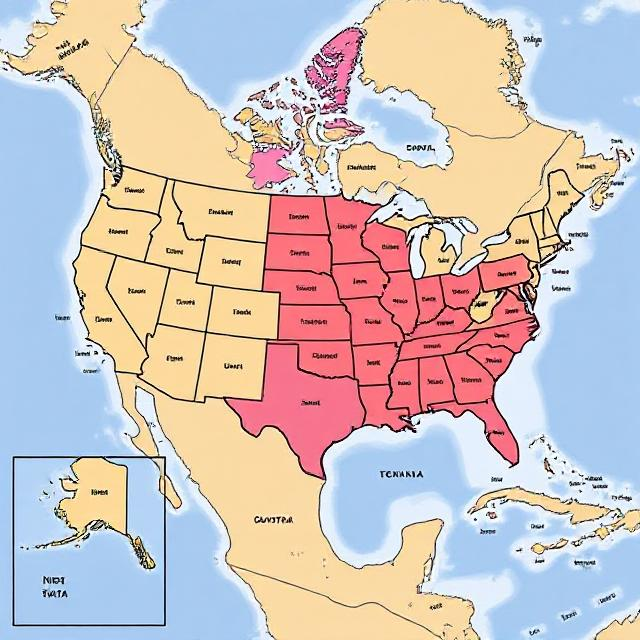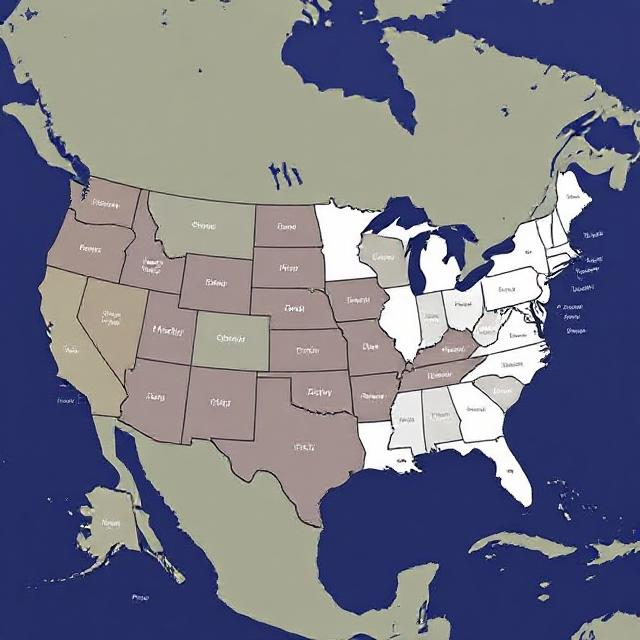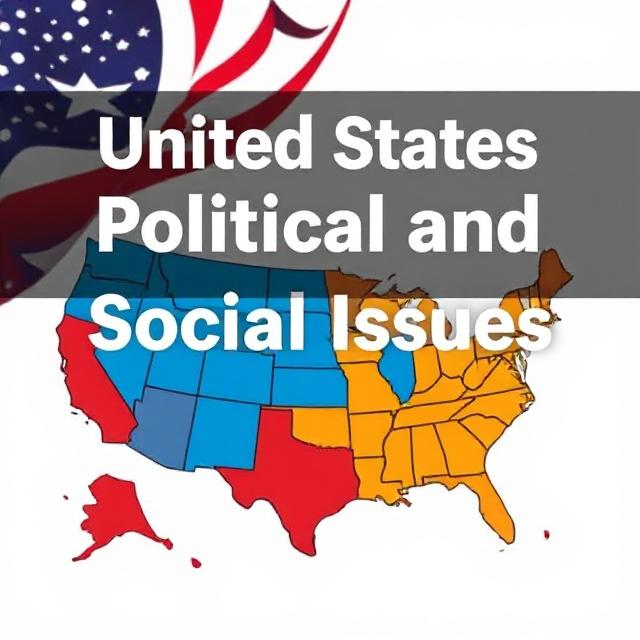The United States comprises 50 states and several territories that are not fully incorporated into the Union. These territories vary significantly in terms of governance, rights, and their relationship with the federal government. This article explores the history, significance, and current status of U.S. territories, highlighting their unique characteristics and the ongoing debates surrounding them.
Definition of U.S. Territories

U.S. territories are regions under the jurisdiction of the United States but not part of any state. They can be classified into two main categories:
Organized Territories
Organized territories have an established local government and are governed by the U.S. federal government. They are typically on a path toward statehood and have a degree of self-governance.
Unorganized Territories
Unorganized territories do not have an established local government and are directly administered by the federal government. They may be eligible for future organization and statehood, but their governance is more limited.
Major U.S. Territories

Puerto Rico
- Status: Commonwealth
- Population: Approximately 3.2 million
- Capital: San Juan
Historical Background
Puerto Rico was ceded to the United States from Spain following the Spanish-American War in 1898. The Foraker Act of 1900 established a civil government, while the Jones-Shafroth Act of 1917 granted U.S. citizenship to Puerto Ricans. This act allowed residents to elect their own legislature but retained significant control by the U.S. Congress.
Current Status
Puerto Rico operates as a commonwealth, allowing for a degree of self-governance. However, residents cannot vote in presidential elections and have limited representation in Congress, with one non-voting delegate. The island faces ongoing economic challenges, including a significant debt crisis, high unemployment rates, and population decline due to migration to the mainland U.S. The political status of Puerto Rico remains a contentious issue, with ongoing debates about statehood, independence, or maintaining commonwealth status.
Cultural Significance
Puerto Rico has a rich cultural heritage influenced by its Indigenous Taíno roots, Spanish colonization, and African heritage. The island is known for its vibrant music, dance, festivals, and cuisine, contributing significantly to the cultural mosaic of the United States.
Guam
- Status: Unincorporated Territory
- Population: Approximately 170,000
- Capital: Hagåtña
Historical Background
Guam was ceded to the United States by Spain following the Spanish-American War in 1898. The island has a strategic military significance, serving as a key naval base in the Pacific. During World War II, Guam was occupied by Japanese forces from 1941 to 1944 before being liberated by U.S. troops.
Current Status
Guam is an unincorporated territory, meaning it is governed by the U.S. federal government but does not have the same rights as a state. Residents are U.S. citizens but cannot vote in presidential elections. Guam’s political status is also a topic of discussion, with calls for greater self-determination and potential statehood.
Cultural Identity
Guam has a unique Chamorro culture, with traditions that reflect its Indigenous heritage, Spanish colonial influence, and American presence. The island is known for its warm hospitality, traditional dances, and culinary specialties, such as red rice and kelaguen.
U.S. Virgin Islands
- Status: Unincorporated Territory
- Population: Approximately 106,000
- Capital: Charlotte Amalie (St. Thomas)
Historical Background
The U.S. Virgin Islands were purchased from Denmark in 1917 for $25 million, primarily for strategic reasons during World War I. The islands, which include St. Thomas, St. John, and St. Croix, have a history of sugar plantations and slavery.
Current Status
As an unincorporated territory, the U.S. Virgin Islands have a local government with a degree of self-governance. Residents are U.S. citizens but, like those in Guam and Puerto Rico, cannot vote in presidential elections. The islands face economic challenges, including reliance on tourism and issues related to infrastructure and public services.
Cultural Heritage
The U.S. Virgin Islands boast a rich cultural heritage influenced by African, European, and Indigenous traditions. Festivals, music, and dance play a significant role in the islands’ cultural identity, with events like Carnival celebrating local customs and history.
American Samoa
- Status: Unincorporated Territory
- Population: Approximately 55,000
- Capital: Pago Pago
Historical Background
American Samoa was formally ceded to the United States in 1900 through a treaty with local chiefs. The islands have a strategic military significance and have been home to a U.S. naval base since the early 20th century.
Current Status
American Samoa is an unincorporated territory with a unique status. Residents are U.S. nationals, meaning they can live and work in the U.S. but do not have full citizenship rights. They cannot vote in U.S. elections and have limited representation in Congress.
Cultural Significance
American Samoa has a rich Polynesian culture, with traditional practices in music, dance, and crafts. The islands are known for their strong community ties and cultural festivals, such as the Flag Day celebration, which honors the territory’s heritage.
Northern Mariana Islands
- Status: Commonwealth
- Population: Approximately 57,000
- Capital: Saipan
Historical Background
The Northern Mariana Islands were part of the Trust Territory of the Pacific Islands after World War II, administered by the United States. In 1975, the islands entered into a commonwealth agreement, establishing a unique relationship with the U.S.
Current Status
As a commonwealth, the Northern Mariana Islands have a degree of self-governance and local control over many affairs. Residents are U.S. citizens but, similar to other territories, cannot vote in presidential elections. The islands face economic challenges related to tourism and labor issues.
Cultural Identity
The Northern Mariana Islands have a diverse cultural heritage influenced by Indigenous Chamorro and Carolinian traditions, as well as Spanish and American influences. Festivals, traditional crafts, and local cuisine reflect this rich cultural tapestry.
Other U.S. Territories

Minor Outlying Islands
The U.S. also administers several small unincorporated territories, including:
- Midway Atoll: Known for its wildlife refuge and historical significance during World War II.
- Wake Island: A strategic military base with limited civilian presence.
- Johnston Atoll: Previously used for military purposes, now mostly uninhabited.
These islands have limited populations and serve primarily strategic, environmental, or military purposes.
Political and Social Issues

Representation and Rights
Residents of U.S. territories face significant disparities in political representation and rights compared to states. They cannot vote for president and have limited congressional representation. This situation raises questions about democracy and equality within the U.S. political system.
Calls for Statehood
There are ongoing movements advocating for statehood for several territories, particularly Puerto Rico and Washington, D.C. Proponents argue that statehood would provide full voting rights and representation in Congress, addressing long-standing inequalities.
Indigenous Rights and Self-Determination
Many territories are home to Indigenous populations with unique cultural identities. Movements advocating for Indigenous rights, land sovereignty, and self-determination continue to grow, reflecting the desire for recognition and respect for their heritage.
Conclusion
The territories of the United States represent a diverse and complex aspect of the nation’s identity. Each territory has its unique history, culture, and challenges, contributing to the broader tapestry of American society. Understanding these territories is essential for addressing the ongoing debates about representation, rights, and the future of U.S. governance.


